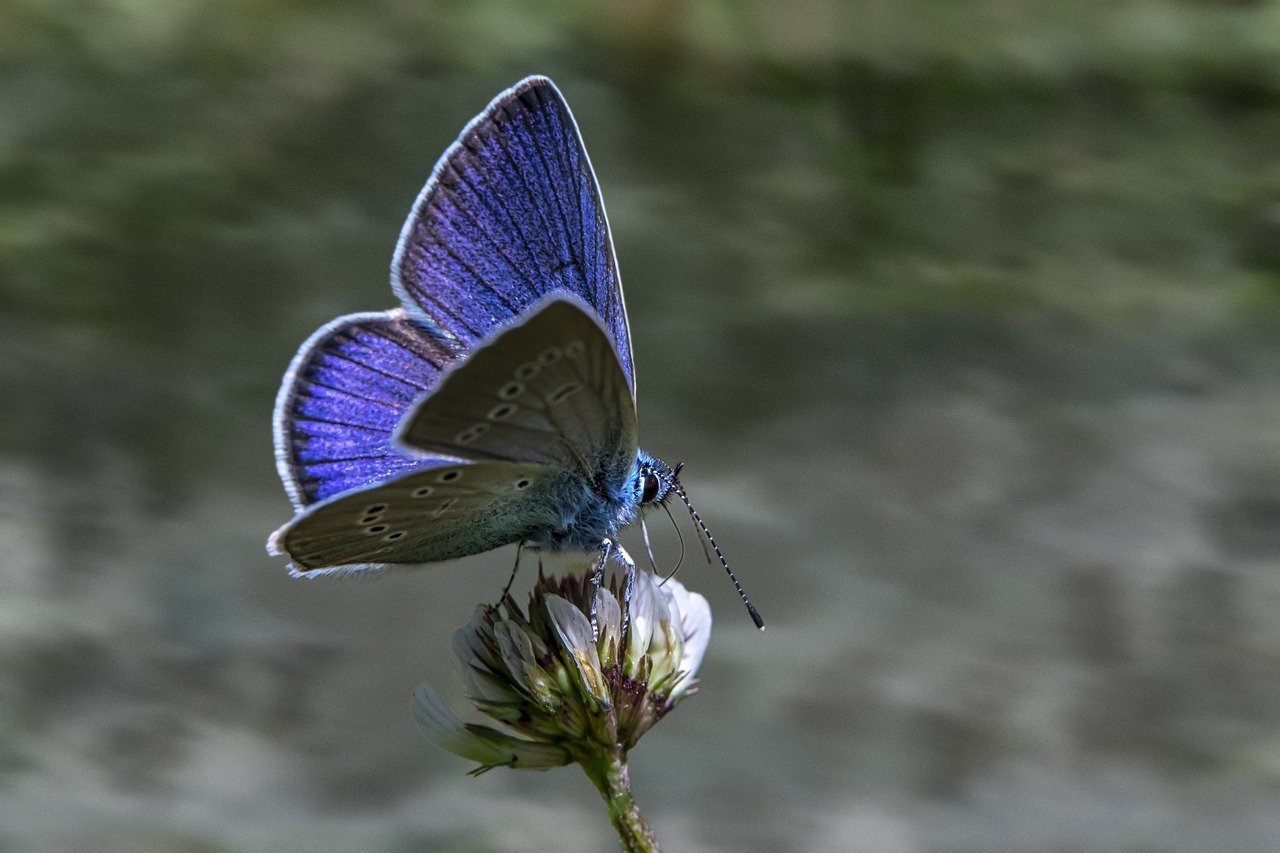The Mazarine Blue (Cyaniris semiargus) is a delicate and visually striking butterfly belonging to the family Lycaenidae. Known for its vivid blue wings in males and more muted tones in females, it is a species often associated with wildflower meadows and grassy habitats. Its presence is an indicator of well-preserved ecosystems.
Physical Description:
- Wingspan: 25–32 mm.
- Males:
- Upper side of the wings is an intense, iridescent blue, often with a slightly darker border.
- The underside is pale grayish with small black spots arranged in a pattern.
- Females:
- Upper side is brown with hints of blue near the base.
- Underside is similar to males, with small black spots and a subtle gray tone.
- Body: Slim and covered in short, fine hairs matching the coloration of the wings.
Behavior:
- Activity: Diurnal, flying actively during warm, sunny days.
- Flight: Gentle and fluttering, often low to the ground.
- Feeding: Adults feed on nectar from flowers such as clover, knapweed, and vetch.
- Resting: When not feeding, they can often be seen basking with their wings closed to regulate body temperature.
Habitat:
The Mazarine Blue thrives in open, flower-rich areas, including:
- Meadows and grasslands: Particularly those with diverse wildflowers.
- Forest edges: Sunny, open clearings near woodland.
- Alpine regions: Up to altitudes of 2,500 meters in mountainous areas.
- Abandoned farmland: Where native vegetation has returned.
Distribution:
- Found across Europe, extending into parts of Asia.
- Absent from northernmost regions and some arid areas.
- Populations can be patchy, depending on habitat availability.
Life Cycle:
- Eggs:
- Laid singly on host plants, usually legumes such as clover (Trifolium) or vetch (Vicia).
- Eggs are tiny, round, and pale green or white.
- Larvae:
- The caterpillars are small, green, and slightly hairy, blending well with their host plants.
- They feed on the leaves and flowers of the host plants.
- Pupae:
- Pupation occurs near the base of the host plant or in nearby leaf litter.
- The pupae are well-camouflaged and develop over a few weeks.
- Adult:
- Adults emerge in late spring to early summer, with a single brood per year in most areas.
- They live for about 2–3 weeks.
Ecological Role:
- Pollination: Adults contribute to the pollination of various wildflowers as they feed on nectar.
- Food Source: Larvae and adults are prey for birds, spiders, and other predators, playing a role in the food web.
Conservation Status:
- Listed as Least Concern by the IUCN, but populations are vulnerable to habitat loss and degradation.
- Threats include intensive agriculture, overgrazing, and the decline of wildflower-rich meadows.
- Conservation measures focus on protecting and restoring grassland habitats.
Interesting Facts:
- Name Origin: The name “Mazarine” is derived from the deep blue color, resembling the shade of the Mazarine gemstone.
- Temperature Regulation: Males bask with their wings open to absorb heat, while females tend to keep their wings closed more often.
- Indicator Species: The presence of the Mazarine Blue is a sign of healthy, biodiverse ecosystems, as it requires specific host plants and habitat conditions.
Summary:
The Mazarine Blue (Cyaniris semiargus) is a charming butterfly that enriches the landscapes of Europe and parts of Asia. Its vivid coloration and dependence on wildflower-rich habitats underscore the importance of preserving natural ecosystems. As a pollinator and an indicator of environmental health, it holds both ecological and aesthetic value.
Views: 1312
Subscribe to the newsletter:
